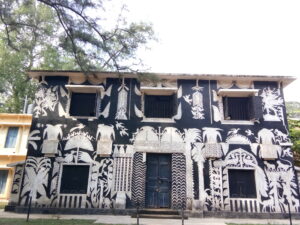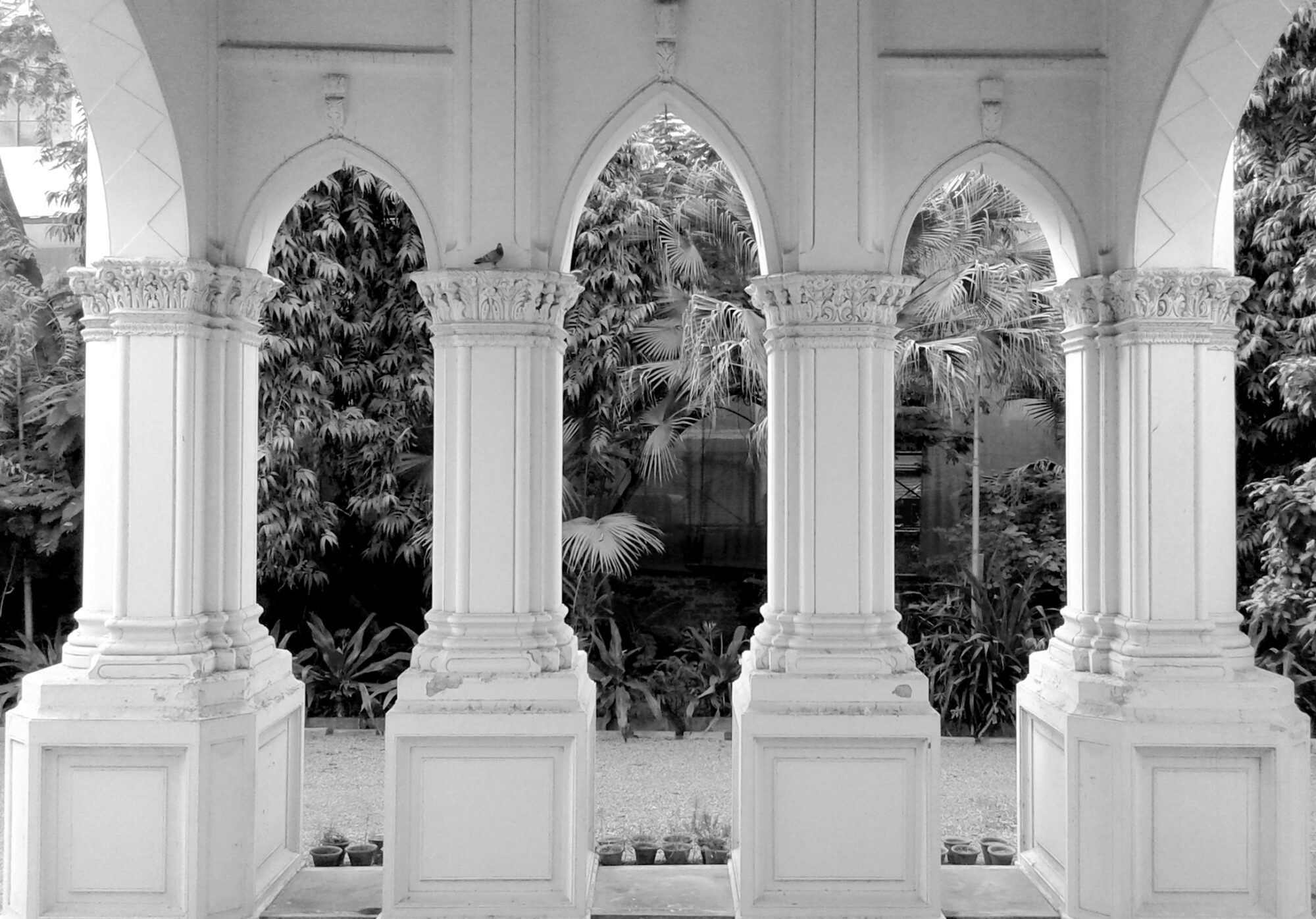'The Shades of Santiniketan'
by
Urmila Banu
29th January 2022
18:00 IST

The cultural immersion of Santiniketan would be described in the famous lines by Rabindranath Tagore, “I have spent a fortune traveling to distant shores and looked at lofty mountains and boundless oceans, and yet I haven’t found time to take a few steps from my house to look at a single dew drop on a single blade of grass.” The nuance of colour that defines Santiniketan pertinently is the deep red, the colour of the soil of Birbhum that paves each path of the region. The aesthetics of colours in context to Santiniketan would be underpinned through the colourful kaleidoscope of cultural intermingling, in the forms of festivals, khoai landscapes, Bauls and monumental artworks surrounded the premises. With the change of every season Santiniketan adores herself with new attires. Like in the springtime Basant Utsab is celebrated very distinctively, dotted by colourful Palash and Shimul flowers, Shantiniketan and its surroundings become a riot of colours during this time. The vibrant hues of the flowers add to the colours on the otherwise red soil. With its distinctive character and style, the town prepares to welcome spring with vigorous enthusiasm. It was Tagore who introduced the celebration of seasons at Santiniketan like Vriksharopan, Halkarshan, and Barsha Mangal etc. and linked collective arts, crafts and rural cottage industry very closely to the festivities.
 Urmila Banu, an Independent Writer, has grown up in a cosmopolitan atmosphere in Kolkata and currently lives in metropolitan Delhi urges to nurture an in-depth connection with collective culture through understanding a cosmology of diverse ecosystems. Her articles, mostly research-based have been published in various art magazines and journals. She has bagged post graduate degrees in English Literature and Mass Communication and Public Relations.
Urmila Banu, an Independent Writer, has grown up in a cosmopolitan atmosphere in Kolkata and currently lives in metropolitan Delhi urges to nurture an in-depth connection with collective culture through understanding a cosmology of diverse ecosystems. Her articles, mostly research-based have been published in various art magazines and journals. She has bagged post graduate degrees in English Literature and Mass Communication and Public Relations.
Click here to Register students are encouraged

